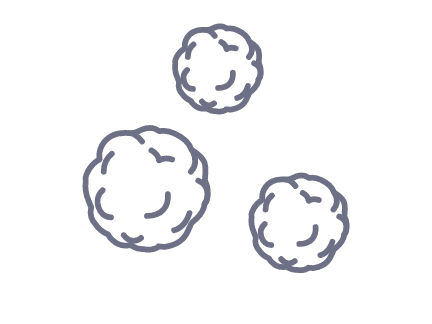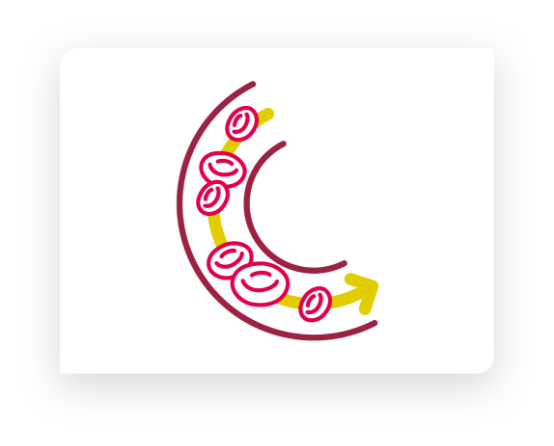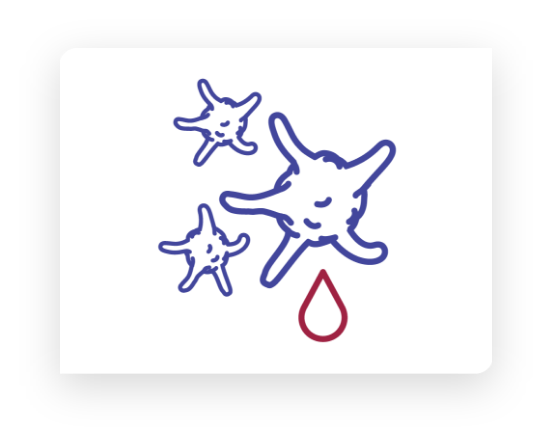What is Acute Leukemia?
What is acute leukemia?
Leukemia is a type of blood cancer that takes place in the
bone marrow
where normal blood cells are made. It starts with a single
stem cell
that becomes an abnormal cell—or a leukemia cell.
Normally, stem cells go through different stages before they fully develop into healthy blood cells, which include red blood cells, white blood cells, and platelets.








Red blood cells carry oxygen all throughout your body


White blood cells protect your body and fight infections




Platelets help your blood clot to stop bleeding
Normally, stem cells go through different stages before they fully develop into healthy blood cells, which include red blood cells, white blood cells, and platelets.

Red blood cells carry oxygen all throughout your body

White blood cells protect your body and fight infections

Platelets help your blood clot to stop bleeding
With acute leukemia, the abnormal leukemia cells (or blasts ) multiply very quickly and take over the space in the bone marrow. This blocks the cells from turning into normal healthy blood cells. Acute lymphoblastic leukemia (or ALL) and acute myeloid leukemia (or AML) are two different types of acute leukemia that stop cells from developing into healthy blood cells and lower your healthy blood cell count.
WHAT IS KMT2Ar?
What is KMT2Ar?
When you were first diagnosed with ALL or AML, your doctor ran a
workup of tests
to see the exact type of acute leukemia you have. Part of that workup included genetic testing that can detect the genetic changes, such as mutations and
gene rearrangements
, that may have caused your specific type of ALL or AML. The majority of KMT2A rearrangements include translocations—a type of genetic change in which a piece of one
chromosome
breaks off and attaches to another chromosome.
KMT2A rearrangements, including translocations,
may play a role in the development of both AML and ALL
In general, AML is more common in adults, and ALL is more common in infants, children, and young adults. But AML and ALL can affect people of any age and gender.
Here’s a breakdown of the percent of people with AML or ALL who may have a
KMT2A
![See less circle]() gene rearrangement (KMT2Ar):
gene rearrangement (KMT2Ar):
Infants
Children
Adults
KMT2Ar AML
KMT2Ar AML
KMT2Ar AML
KMT2Ar ALL
KMT2Ar ALL
KMT2Ar ALL
KMT2Ar AML ~35%-60%
KMT2Ar AML ~10%-15%
KMT2Ar AML ~5%-10%
KMT2Ar ALL ~80%
KMT2Ar ALL ~5%-6%
KMT2Ar ALL ~5%-15%

Actor portrayal.
Until now, there hasn’t been an FDA-approved treatment that targets AML and ALL with a KMT2A translocation in
patients 1 year and older
whose disease has come back
or has not improved after
previous treatment(s)
Until now, there hasn’t been an FDA-approved treatment that targets AML and ALL with a KMT2A translocation in patients 1 year and older whose disease has come back or has not improved after previous treatment(s)
Actor portrayal.
